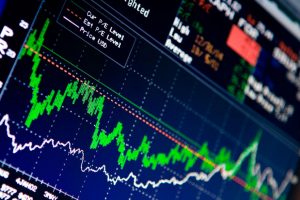2017 Letter To Investors
After a satisfactory year generating results to investors in 2016, 2017 turned out to be quite the blockbuster in terms of returns. For the second straight year, all asset classes produced healthy gains, with none of our portfolio components producing returns in the red (negative). Although bond returns were somewhat muted in 2017, our equity returns were truly substantial, following economic growth and keeping pace with stock markets around the world. Our largest portfolio gains were in the international equity markets, with our international developed and international developing markets funds producing returns well north of 30%. Overall, our moderate-growth portfolio returned over 16% in 2017. Let’s take a look at each investment sector closer.
US Stocks:
The US stock market turned in a very impressive year in 2017, with returns of 19.4% for the S&P 500, 25.1% for the Dow Jones Industrial Average and 28.2% for the NASDAQ Composite. Let in part by the Presidential election of Donald Trump at the end of 2016, the “Trump Bump” carried over into 2017 to propel markets higher again. Improving economic conditions (particularly globally), strong corporate fundamentals, falling unemployment levels and interest rates that remain near 30-year lows, were all factors in helping to produce such stellar results for equity markets here in the US.
Going forward into 2018, there is reason to believe that US equity markets should continue to move higher. Incoming Federal Reserve Chairman Jerome Powell needs to keep inflation under wraps and not raise interest rates too quickly. President Trump’s tax cut promises and intent of slicing away at onerous regulations should also prove beneficial for the economy. The economic back-drop does look good for US stocks to continue their upward trajectory for a 3rd straight year.
Our US equity mutual funds had an adequate year in 2017 in terms of return, though not spectacular when compared to their international equity counterparts. Our large-cap US component (and biggest portfolio holding), the T. Rowe Price Large Cap Core Fund, produced a return of 20.93%, handily outpacing the S&P 500 by over 1%. Still rated 5-Stars by Morningstar, it has an incredibly low expense fee of only 0.81% and will remain intact as one of our core portfolio holdings in 2018.
Though still significantly in positive territory, our mid and small-cap funds did not produce market-beating returns in 2017. The AMG Managers Fairepointe Mid Cap Fund returned 11.52% in 2017, trailing both the S&P 500 and its category average. Due to its volatile nature and higher expense fee (1.12%) than similar products, this fund requires a longer-term investment outlook than many other investment funds. It has drifted farther into the ‘value’ spectrum, and as such, I am closely monitoring it for possible replacement to a more ‘core’ type of holding.
In the US small-cap space, the Horizon Hancock Burkenroad Small Cap Fund returned just over 10% in 2017. Although I do like the stock holding profile of this fund (it is very well-balanced in terms of growth vs value) and it’s low risk nature, I believe there are better investment products out there that could replace this fund in the future. I am currently reviewing funds in this space for a higher-ranked product, particularly with a lower expense fee (1.39%) than our current holding.
International Developed Market Stocks:
International developed markets (primarily Japan, western Europe and Canada) produced incredible gains in 2017. The majority of these stellar returns were due to a world economy expanding in the area of 4%, the best since the post-recession bounce in 2011. A pick-up in global growth boosted corporate profits and commodities during the year, while tame inflation keep central banks around the world from raising interest rates. Falling unemployment, stronger trade and an increase in business spending were all drivers behind the big returns. In fact, of 73 international markets tracked in 2017, only 9 produced negative returns.
Our developed international market exposure produced nothing less than phenomenal returns in 2017 and truly exemplifies why investing internationally can enhance returns. One of the cornerstone investments in our portfolio, the Oakmark International Fund, again trounced the market in 2017, producing a return of 29.75%. A Gold-rated, 5-Star Morningstar fund, it easily outpaced the Morgan Stanley All-Country World Index (excluding the US) and it’s competition by 2.56% and 4.63%, respectively, in 2017. The long-term track record of the Oakmark International Fund is truly remarkable, as it has ranked in the top 50% of its class in 7 of the past 10 years.
Our small-cap international developed area generated even more substantial results in 2017, with the Victory Trivalent International Small-Cap Fund returning a mind-boggling 36.54%. Good enough to rank it in the top 15% of its class last year, the fund has excellent small and mid-cap exposure and a management team that has been at the helm since 2007.
Emerging Market Stocks:
Equities in countries described as ‘emerging’ (for example, Brazil, Russia, India and China) turned in banner years in 2017. These huge stock market gains allowed our emerging market’s fund, the Oppenheimer Developing Markets Fund, to return a whopping 34.77% in 2017. This funds well-established process, reasonable fees and seasoned manager truly make it a solid choice for emerging-markets exposure.
Although emerging markets did very well in 2017, the backdrop continues to look favorable going into 2018 as well. With more attractive expected returns than developed markets and a seemingly improved ability to endure economic shocks, many analysts feel that emerging markets have matured as an asset class and merit more attention in investment portfolios. Investment analysts are particularly bullish about emerging markets going into 2018, so we are maintaining a slightly higher weighting in this sector (7.50%) than in previous years.
Domestic and International Bonds:
Domestically, US bonds continue to be at the tipping point of what has been an almost 40-year bull market run. Bond prices move inversely to interest rates, so while rates continue to remain subdued there is ample and persistent fear that they will start increasing in 2018 which could spell the end of the bond bull market. The concern with bonds is that low rates have pushed investors into riskier assets in a quest for yield. US government bonds ended the year at almost where they began. Yields on the 10-year Treasury bond started the year at 2.45% and ended the year at 2.43%. Both the two-year note and the 30-year bond ended up similarly unchanged.
Heading into 2018, there is reason to believe that long-term bond yields could move higher, resulting in lower bond prices. First, economies all around the world are accelerating, which could result in greater demand for loanable money. Second, we have President Trump’s tax package which does bring the promise of an acceleration of economic growth. Last, the economy is showing, albeit subdued, inflationary pressures as labor markets begin to get tighter and tighter (as job growth picks up and unemployment falls, employers will have to pay more to hire increasingly scarce talent).
In fact, many Wall Street economists are telling investors to brace for the biggest year of interest rate tightening in more than a decade. With the world economy heading into its strongest period since 2011, economists at Citigroup and JPMorgan are predicting average interest rates across advanced economies will climb at least 1% next year.
On the corporate bond market side of the ledger, although though corporate bond returns were higher than returns from Treasuries through 2017, investors should reduce their expectations in 2018. With corporate bond valuations so high and the potential for yields to move modestly higher as the Federal Reserve continues to raise interest rates, the price appreciation we saw in 2017 is unlikely to continue. In fact, credit spreads (the difference between corporate bond yields and their respective Treasury yields) are much below their long-term averages and are at or near their post-crisis lows. This implies that investors aren’t earning much return relative to the additional risks corporate bonds imply.
In the developed international bond market, the direction of bond returns in 2018 will hinge on whether growth and inflation will continue to increase in Europe and Japan, allowing their central banks to begin reducing their quantitative easing measures. Reduced stimulus from the Bank of Japan and the European Central Bank could give long-term yields room to run higher, and the opportunity for the yield curve to steepen across a variety of international markets.
Our bond funds turned in adequate, though not spectacular returns in 2017. The Loomis Sayles Bond Fund, with its heavy weighting in below-investment grade class bonds, returned 7.16% last year, ranking it in the top 25% of its class. This multisector fund is still managed by one of the best teams in the industry, with veteran manager Donald J. Fuss at the helm. With $13.1 billion in the fund and a slightly aggressive stance, the Loomis Sayles Bond Fund still boasts excellent 5 and 10-year returns. Another of our core bond holdings, the PIMCO Total Return Fund produced a market-beating 4.73% return in 2017, besting 83% of its peers. This fund has almost $75 billion under management, making it one of the largest mutual funds in the country.
The Templeton Global Fund produced disappointing results in 2017, but still boasts phenomenal long-term returns. Only 3 times over the past 10 years has this fund ranked in the bottom half of its class, with 2017 being one such year. Still ahead by 2.35% in 2017, we have increased our foreign bond exposure slightly going into 2018 to 7.5% to avoid some US interest-rate risk but still maintain adequate fixed-income portfolio exposure.
Commercial Real Estate (REITs):
Although still turning in a positive performance in 2017, our real estate area is one to be of concern. Commercial real estate tends to do well when the economy is healthy and interest rates are constant or falling. On the global economic side, growth is still intact both domestically and internationally which bodes well for real estate. However, as the Federal Reserve continues to raise interest rates, a new chair takes over at the Federal Reserve and Congress moves ahead with fiscal stimulus that’s likely to be inflationary, the near-term outlook for real estate may not be particularly rosy.
Rising interest rates can hurt REITs in two different way: First, if properties have to pay more to borrow, they won’t be as profitable. Furthermore, the dividend they pay to investors may be worth less. As such, we are maintaining our 5% weighting in global real estate going into 2018 for these reasons.
Our global real estate exposure is through the Dreyfus Global Real Estate Fund, which maintains a roughly 50/50 weighting in domestic vs international commercial real estate. Currently the fund is invested slightly higher in US real estate at 54% vs international at 44%. A very consistent long-term performer, this fund did produce a lower than average return in 2017 vs some of its competitors, but it is one of only a handful of few global real estate funds that is actively managed (fund turnover is in the 75% range).
Commodities:
Almost all commodities, everything from coal to iron ore reaped gains in 2017. Gold prices gained 13.25% in 2017 after 3 consecutive years of declines. The World Gold Council expects further gains in 2018 if the US dollar continues to weaken, economic growth in developing markets continues to explode and central banks across the globe begin to ease their process of quantitative easing (Europe and Japan, mainly). Geopolitical tensions and the uncertainty over the impact of Trump’s new US tax plan also contributed to the boost of the yellow metal. Copper was also a stand-out performer in part due to expectations of rising demand for the mass production of electric vehicles. The industrial metal turned in its largest annual gains since the global financial crisis in 2009.
In the energy arena, markets here also had an explosive year in 2017. Oil ended the year around its highest prices in 2-1/2 years, settling above $60 per barrel. The oil market improved significantly amid optimism about years of oversupply finally ebbing, capped by rising demand and the production-limit deal led by the Organization of the Petroleum Exporting Countries (OPEC), being extended through 2018. On the other hand, natural-gas futures, declined 21% in 2017, but the freezing weather at the end of the year helped to mitigate some of these losses.
Our commodities exposure in 2017 turned in a market-beating return. The PIMCO CommoditiesPLUS Strategy Fund returned 10.28% in 2017, trouncing the average commodity fund in its class by almost 8%. This dramatic return allowed it to be ranked #6 in its class for 2017. Part of the reason this fund did so well in 2017 was due to its heavy weighting in the energy area, which many analysts again like going into 2018. Similar to the emerging markets area, we are keeping a slightly heavier weighting in commodities in 2018, at roughly 6%. Many investment houses (including Goldman Sachs, predicting a 7.5% return) think commodities will outperform in 2018. Strong global demand for raw materials are keeping commodities like energy and copper at the forefront of what should be a good year for the sector in 2018.
Alternative Investments:
Our alternative investment is a long/short fund called the Calamos Market Neutral Income Fund. Essentially this fund attempts to earn a better return than cash or Treasuries through covered call writing and convertible arbitrage. These strategies are intended to provide the fund with an enhanced potential for risk-managed returns due to their differing responses to volatility. This fund should help provide diversification in the low interest rate environment we are experiencing today.
With a 4-Star Morningstar Rating and a very low expense fee, the Calamos Market Neutral Fund has been a phenomenally consistent performer over the past 11 years. During this time period it has ranked in the top 50% of its class, producing returns in the low single digits (except for the volatile years of 2008 and 2009). Last year it returned 4.56%, ranking it in the top 38% of its class.






